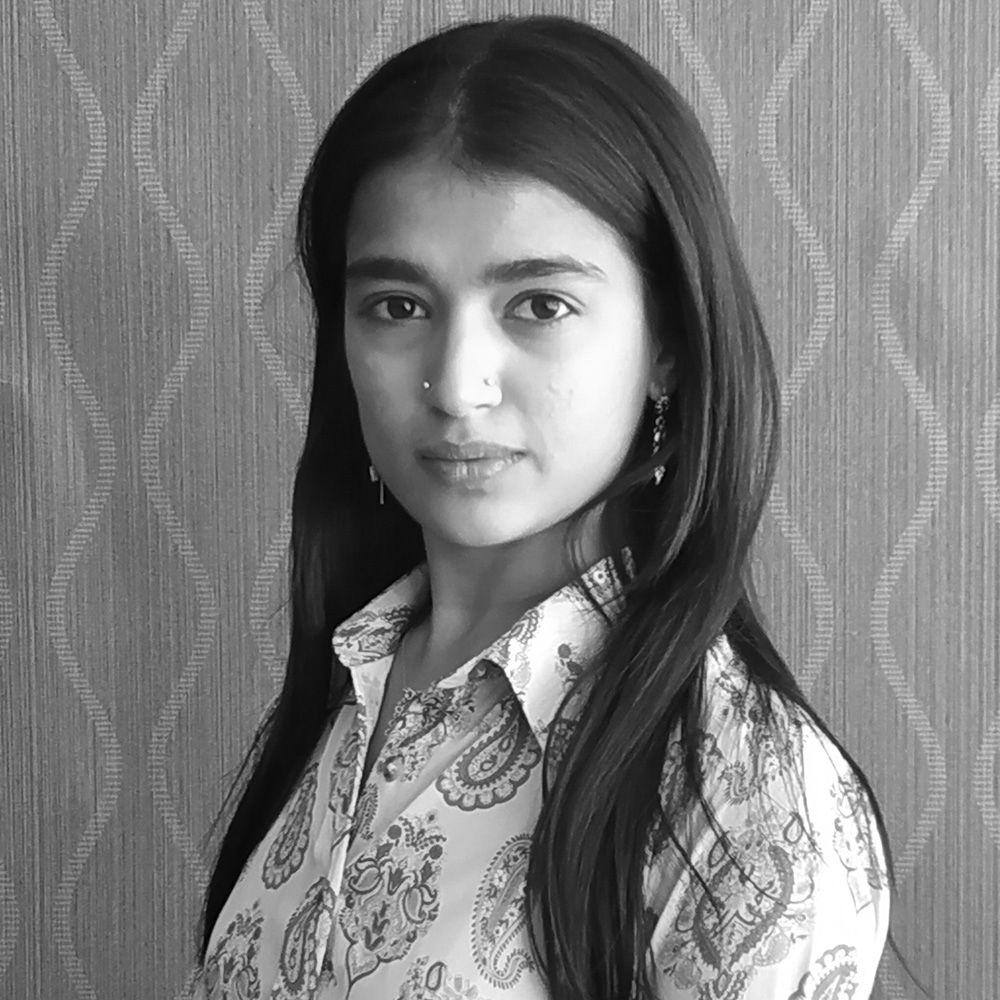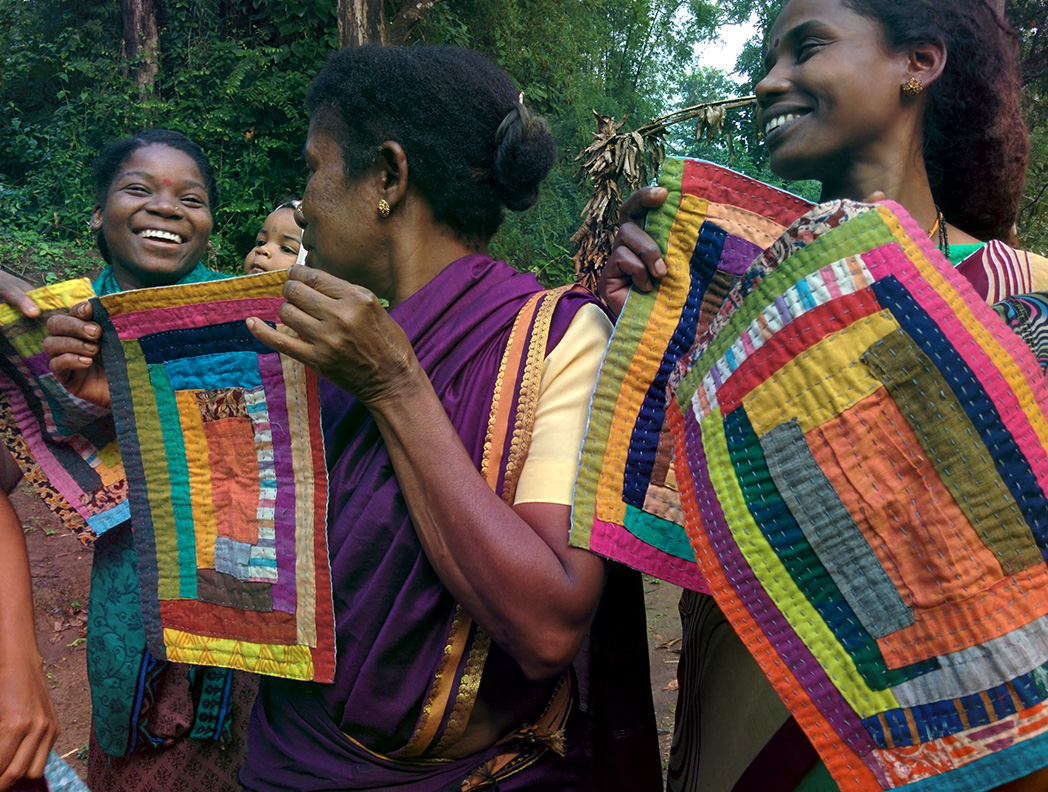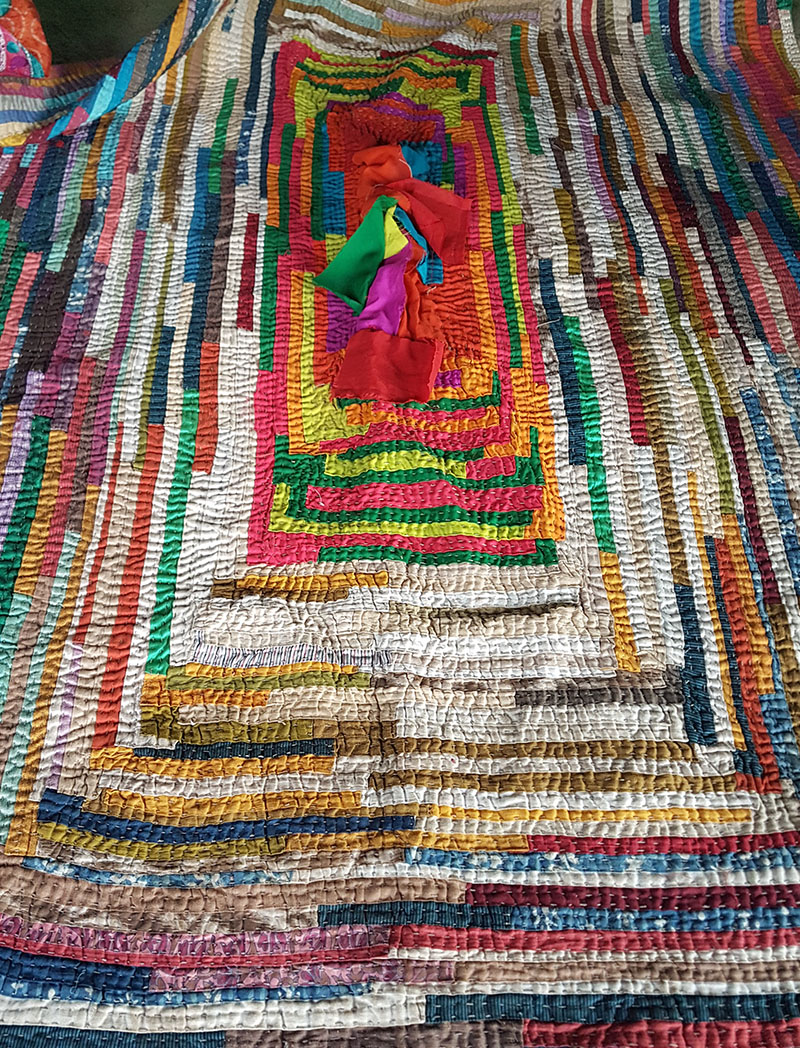PERSPECTIVES
Quilting as a Form of Assimilation: Siddi Quilts and Quilt-makers
Like multicoloured mosaics, these unique quilts (kavands) are woven by women of the Siddi community of northern Karnataka. Quilting has been practised by generations of women in nomadic and settled communities across Karnataka, the former including the Jogis, Kilikayathas and Gaundaligas, and the latter comprising the Maratha, Lingayat, Siddi, Gowli, Holega, Madiga, Vokkaliga, Sunagaru, Ganigaru and Oddaru communities, among others.
The Siddis are people of African descent who settled in Karnataka, Gujarat and Maharashtra in India over the past five centuries. The communities across these regions do not share a common historical experience or point of origin within Africa but arrived in India through various channels — as soldiers, personal attendants to traders or slaves on trade ships. Each of these communities were referred to by different names based usually on their believed point of origin. The presence of the Siddis in northern Karnataka can be traced back to nearly the sixteenth century. Most scholars, as well as older members of the community, believe that they arrived on Portuguese trade ships that plied the Indian Ocean maritime routes connecting the eastern coasts of Africa and Arabia with the western coast of India.
The Siddi in Karnataka have largely assimilated local cultures, including religion, dress, food and language, speaking a dialect that is a mixture of Konkani and Marathi, while also being able to converse in Kannada, Urdu and Konkani. The adoption of quilting is one such form of assimilation into local culture and has now been subsumed into the Siddi way of life.
The quilting is begun with a loose vision of the design, but it is not something that must be adhered to; the creative process takes shape as the quilts are stitched. Each quilter’s innate appreciation of colour as well as the various naturally occurring shapes and motifs in the vicinity influence the design and pattern that appears on the finished quilt. This is different from many textile traditions of the region, where makers put pen to paper and map finished products before creating them.
A single quilt is made by stitching together multiple layers of old, used bits of fabric over a base layer which usually comprises one or two sarees sewn together along their lengths. Each new layer is added to the base using a simple running stitch along the edge where the new layer meets the older layer. The fabric is traditionally sourced from the makers’ families, ensuring that the colours, patterns and textures of the various patches that make up each quilt are unique. Taking weeks to make, the quilts are traditionally built to be durable and easy to repair, and are often passed down from generation to generation.
Anitha N Reddy (@anithanreddy), an art historian, curator and designer who has worked with the Siddi quilters for more than a decade, explains: ‘Often, most of the quilts used by households were not made by the women of that family. Each of these villages had one older woman who functioned as the quilter for the community and was recognised as the master of the craft. Her home was a space for other women of the village to gather and learn to quilt. She would be paid for her craft, most often in kind, but sometimes in cash. Now, more women have begun to quilt, and we are slowly helping them to monetise their skills by enabling them to sell to urban markets.’












